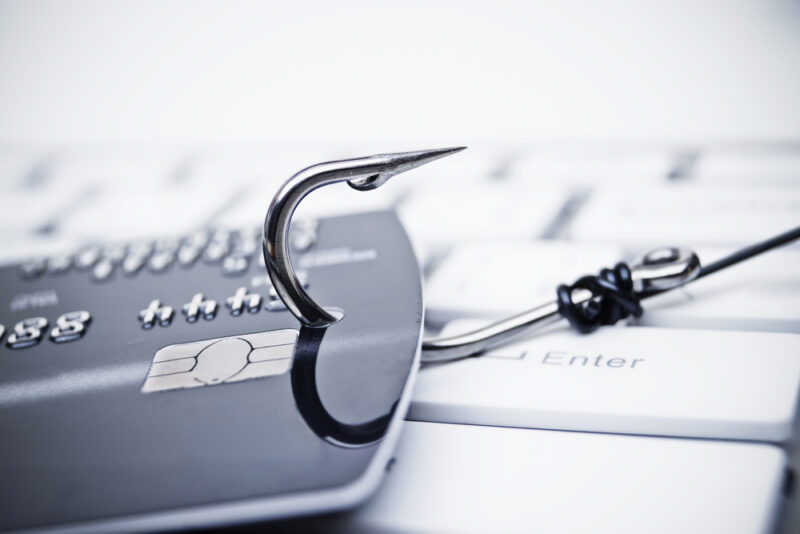6 Common Types of Phishing Attacks
Identifying and Defending Against Phishing: Protect Your Business from These 6 Common Tactics
What is Phishing?
Phishing is a type of social engineering attack often used to steal user data, including login credentials and credit card numbers. It occurs when a cybercriminal, masquerading as a trusted entity, tricks a victim into opening an email, instant message or text message.
Below are 6 common types of phishing attacks to be on the lookout for!

Email Phishing: The Classic Attack
What is it?
Email phishing is probably the most familiar type of phishing attack. Cybercriminals send emails that appear to be from a trusted source, such as your bank or a well-known brand, urging you to click a link or download an attachment.
What to look out for:
- Suspicious email addresses (e.g., [email protected])
- Urgent or alarming language (“Your account will be suspended!”)
- Links that don’t match the sender’s domain
Quick tip:
Always hover over links before clicking to ensure they lead where you expect. And when in doubt, don’t click! Go directly to the company’s website instead. Invest in a email security service.
Spear Phishing: The Targeted Approach
What is it?
Spear phishing takes things up a notch by targeting specific individuals or companies. Hackers research their victims, personalizing the message to make it seem more legitimate. This type of attack is common in businesses, where hackers might pose as a CEO or trusted partner.
What to look out for:
- Personal details that make the email feel authentic
- Requests for wire transfers or sensitive information
- Fake invoices or login requests
Quick tip:
Educate your team about verifying requests for payments or sensitive data, especially those coming from higher-ups. A quick call to confirm can save you a lot of trouble.
Whaling: The CEO Scam
What is it?
Whaling is spear phishing that specifically targets executives or other high-level employees within a company. Hackers will use techniques similar to spear phishing but with the goal of gaining access to company accounts, confidential information, or financial resources.
What to look out for:
- Requests for large financial transactions
- Emails that seem urgent, coming directly from a “CEO” or “CFO”
- Emails with minimal or odd punctuation, such as no greeting or too much urgency
Quick tip:
Implement multi-factor authentication (MFA) for executives to make it harder for hackers to gain access, even if they get hold of login credentials.
Smishing: Phishing via SMS
What is it?
Smishing (SMS phishing) involves sending fraudulent text messages that try to get you to click a link or call a number. These attacks often pose as urgent messages from a bank, delivery service, or government agency.
What to look out for:
- Texts that ask you to click a suspicious link
- Messages claiming to be from well-known organizations, especially when they demand immediate action
- Unusual phone numbers, especially those not associated with the supposed organization
Quick tip:
Be cautious about clicking links in unsolicited text messages. If you’re not sure about a message, contact the company directly using the contact information on their official website.
Don’t get caught by phishing scams!
Let’s set up defenses that actually work.
Vishing: The Phone Scam
What is it?
Vishing (voice phishing) is a phone scam where cybercriminals pretend to be someone from a legitimate organization, such as a tech support agent or government official, and attempt to extract information over the phone.
What to look out for:
- Unsolicited calls asking for personal or financial information
- Callers pretending to be from your bank or government agencies, especially if they use scare tactics
- Callers asking you to install software or give access to your computer
Quick tip:
Never give out personal or financial information over the phone unless you initiated the call. When in doubt, hang up and call the official number for the company in question.
Clone Phishing: The Sneaky Copycat
What is it?
Clone phishing involves creating a nearly identical copy of a legitimate email you’ve received in the past, but with a dangerous twist—one or more links or attachments are replaced with malicious ones. The idea is that because you’ve seen this email before, you won’t hesitate to trust it again.
What to look out for:
- Repeated emails that look familiar but seem slightly off
- Links or attachments that weren’t in the original message
- Emails sent at unusual times
Quick tip:
If you ever receive an unexpected follow-up email, especially one with new attachments or links, verify it with the sender before interacting.
Not Happy with Your Current IT Support?
Let’s chat about how we can do better.
Stay Protected: Phishing Defense Tips
- Educate your employees: Regular training on how to recognize phishing attacks can be your first line of defense.
- Use email filtering and security tools: These tools can catch phishing emails before they reach your inbox.
- Enable multi-factor authentication (MFA): This adds an extra layer of security and can prevent unauthorized access even if login credentials are compromised.
- Conduct phishing simulations: Testing your team with simulated attacks can help keep them alert and aware.
Phishing attacks are nothing new, but they’re getting trickier by the day. Hackers are constantly coming up with new ways to trick individuals and businesses into handing over sensitive information. Whether you’re running a small business or managing a team, it’s essential to stay aware of these tactics and know how to protect your business.
Get Started with Managed IT Services Today!
Cyber Security Awareness Training Insights
Security Awareness Training for Chicago Businesses
Security Awareness Training for Chicago Businesses How Cybersecurity Training Can Save Your Chicago Business from the Next Big Attack What is Security Awareness Training and Why is it Essential for Chicago Businesses? Security Awareness Training educates employees on how to recognize and respond to cyber threats like phishing, malware, and social engineering attacks. For Chicago…
Continue Reading Security Awareness Training for Chicago Businesses
The Role of Employees in Cybersecurity
The Role of Employees in Cybersecurity Empowering Your Team: Best Practices for Employee-Driven Cybersecurity In today’s world, cybersecurity is not just the responsibility of IT departments. Every employee plays a crucial role in safeguarding a company’s systems and data. The human element is often considered the weakest link in the security chain, but when employees…
Employee Training to Prevent Phishing Attacks
Employee Training to Prevent Phishing Attacks A Critical Measure for SMBs Small and medium-sized businesses (SMBs) face an increasing number of cybersecurity threats. Among these, phishing attacks remain one of the most pervasive and damaging. According to the Verizon Data Breach Investigations Report, phishing was the most common type of social engineering attack, accounting for…
Continue Reading Employee Training to Prevent Phishing Attacks
What Is Ransomware? The Must-Knows.
What is Ransomware? Ransomware Explained: How It Works and How to Defend Against It What Is Ransomware and How Can You Defend Against It? Ransomware is a word no business wants to hear. It’s a type of malicious software designed to block access to your data until a ransom is paid. If you’re wondering how…




